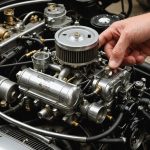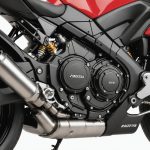Importance of Wheel Balancing in High-Speed Racing
In the world of high-speed racing, the precision of wheel balancing is a pivotal element for achieving optimal racing performance. For British racing cars, maintaining high-speed stability is crucial to navigating the fast-paced challenges on the track. Proper wheel balancing ensures that each tire maintains even contact with the track, allowing for unmatched control and responsiveness.
When wheels are not balanced, the impact on handling and performance can be significant. Unbalanced wheels often lead to vibrations, which can compromise the driver’s ability to maneuver the vehicle precisely. This is particularly detrimental in high-speed scenarios where split-second decisions are vital for success. Moreover, excessive vibrations can lead to uneven tire wear, directly influencing tire grip and contributing to mechanical failures.
Additional reading : Step-by-Step Guide to Installing a Remote Start System in Your UK-Made Vehicle
Wheel balancing also plays a substantial role in extending tire life and ensuring the overall longevity of the racing vehicle. Balanced wheels promote even wear patterns, reducing the need for frequent tire replacements and maintenance, ultimately safeguarding the vehicle’s performance over time. By prioritising wheel balancing, racers can enhance their racing performance and secure a competitive edge on the track.
Techniques for Effective Wheel Balancing
Wheel balancing is crucial for maintaining ride quality and performance, especially for racing wheels where precision is integral. By optimising weight distribution, balanced wheels ensure a smoother drive and reduced vibration. Let’s explore techniques for both dynamic and static balancing and how to choose the right equipment.
This might interest you : Ensuring Genuine Quality: A Guide to Validating Replacement Parts for British Heritage Vehicles
Dynamic Balancing Methods
Dynamic balancing is vital in racing as it accounts for rotation, offering more precise results over static methods. When a wheel spins, dynamic balancing detects imbalances across multiple planes. Essential tools include a balancing machine, which rotates the wheel to identify and correct offsets. The process involves attaching weights to balance the assembly, improving handling and tyre wear.
Static Balancing Techniques
Static balancing is simpler and best for minor adjustments or pre-race checks. Ensuring wheels are balanced involves tools like bubble balancers. This process detects imbalances on a single static plane. While less detailed than dynamic balancing, it remains vital for quick fixes.
Choosing the Right Equipment
For racing wheels, advanced balancing machines are recommended. Regular calibration and maintenance of these machines ensure accuracy. Besides, basic tools like pliers and torque wrenches are essential for at-home balancing tasks. Ensuring equipment fits your racing demands preserves the wheel’s performance.
Real-World Case Studies in British Racing
The art of wheel balancing plays a pivotal role in the success of British Racing Performance teams. These teams have long recognized how this seemingly subtle adjustment can shift the dynamics of a race. By focusing on optimal wheel balancing techniques, teams have seen noticeable performance improvements, showcasing their impact in competitive settings.
An examination of leading British racing teams unearths fascinating insights. Successful teams often implement precise wheel balancing practices, adjusting for factors such as weight distribution and tire wear. These case studies emphasise that such meticulous adjustments can be as crucial as advanced engine tuning. Without optimal balancing, even the most advanced vehicles can suffer reduced speed and handling, leading to underwhelming race outcomes.
Insights from racing professionals provide a deeper understanding of these practices. Experts stress that balance affects not only vehicle performance but also driver confidence, a crucial component for cutting-edge performance. By maintaining stringent balancing standards, these teams ensure their drivers remain competitive.
Ultimately, case studies on wheel balancing underscore its vital role in British racing. When integrated with holistic racing techniques, balancing enhances the overall strategy, offering teams a competitive edge. The symbiosis of instinctive driving skill and tire precision is what propels these racing teams to victory.
Performance Impacts of Wheel Balancing
When it comes to racing performance, the significance of wheel dynamics cannot be overstated. Wheel balancing plays a pivotal role in maintaining optimal handling characteristics and enhancing overall vehicle speed. But how exactly does wheel balance affect a car’s performance?
Wheel balancing techniques directly influence the handling characteristics of a vehicle. Properly balanced wheels ensure that weight distribution is even, reducing vibrations and improving steering precision. This, in turn, allows drivers to maintain better control, especially during high-speed manoeuvres.
Moreover, wheel balance is intrinsically linked to vehicle speed. Imbalances cause uneven tyre wear and increased rolling resistance, which can slow a vehicle down. Racing teams often utilise advanced balancing methods to maximise their vehicles’ speed and efficiency. Even a minor imbalance can marginally reduce speed, impacting race outcomes.
Case examples from motorsport enthusiasts underscore the performance gains from precise balancing. A team participating in a recent race reported a noticeable improvement in speed and lap time after implementing meticulous balancing adjustments. This highlights the subtle yet profound influence balanced wheels have on racing performance.
Ultimately, the art of wheel balancing enhances wheel dynamics, offering drivers a competitive edge through improved handling and speed.
Best Practices for Maintaining Wheel Balance
Maintaining the balance of racing car wheels is paramount for optimal performance and safety. Adopting the right maintenance tips can extend wheel life and enhance driving dynamics.
Regular Inspection and Maintenance
Routine checks for wheel alignment and balance are vital. These inspections help identify potential issues that could affect the car’s handling and tire wear. Common signs indicating the need for rebalancing include vibrations in the steering wheel, uneven tire wear, and the car pulling to one side. Racers should check wheel balance every few races or after any significant impact. Regular maintenance tips like frequent examinations can prevent more severe problems.
Utilizing Professionals vs. DIY
Knowing when to seek professional assistance is essential. While ambitious DIY enthusiasts can attempt basic wheel balancing, professionals provide precise calibration essential for racing cars. DIY balancing involves steps like ensuring the wheel’s weight distribution with basic tools. However, lacking professional tools or expertise may lead to suboptimal results. Professional help offers accuracy and safety, but DIY can be cost-effective with due diligence.
Tips for Successful High-Speed Balancing
High-speed balancing requires particular attention to weight distribution and dynamic forces. Even slight imbalances can destabilize a car at high speeds. Key maintenance tips include using precise equipment to measure distribution and ensure stability. Racers must also be cautious of over-tightening or incorrect weights during adjustments. Following these practices ensures better performance on the track.











